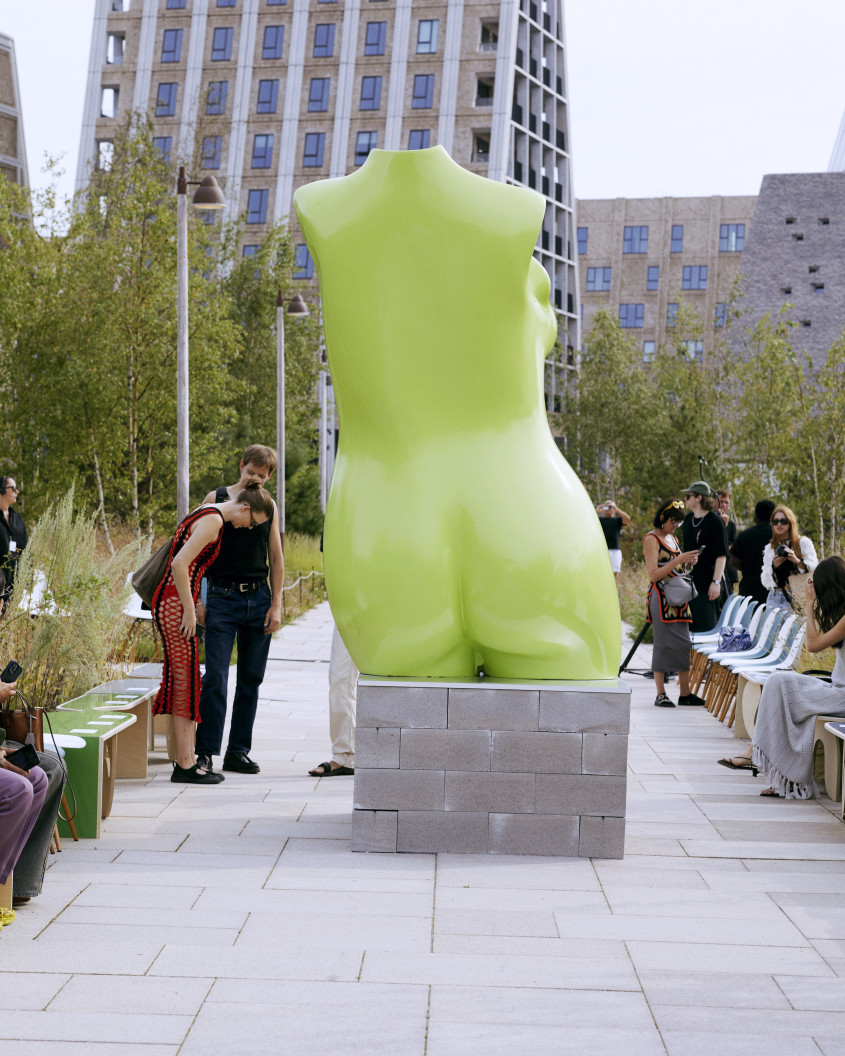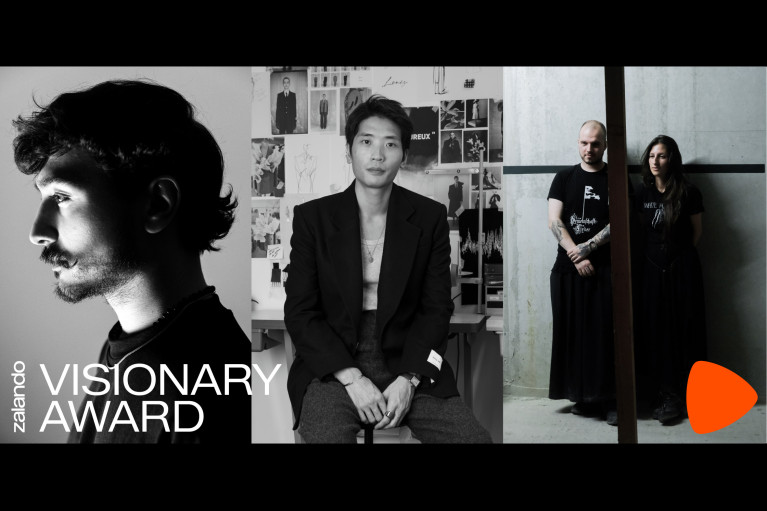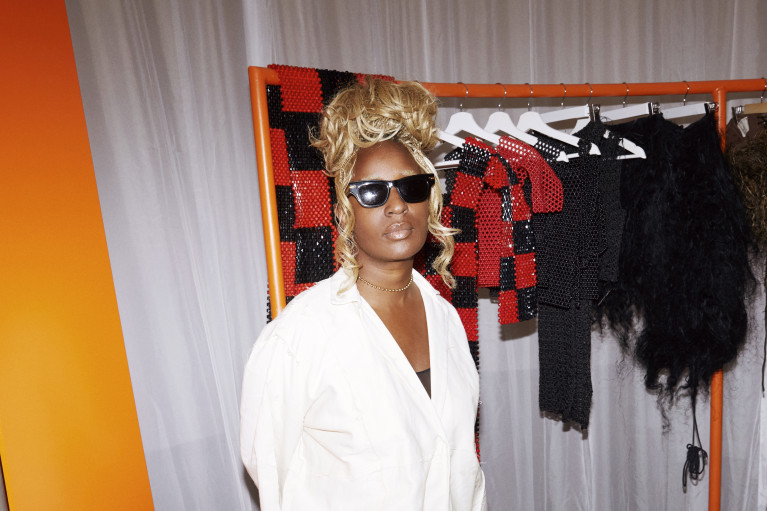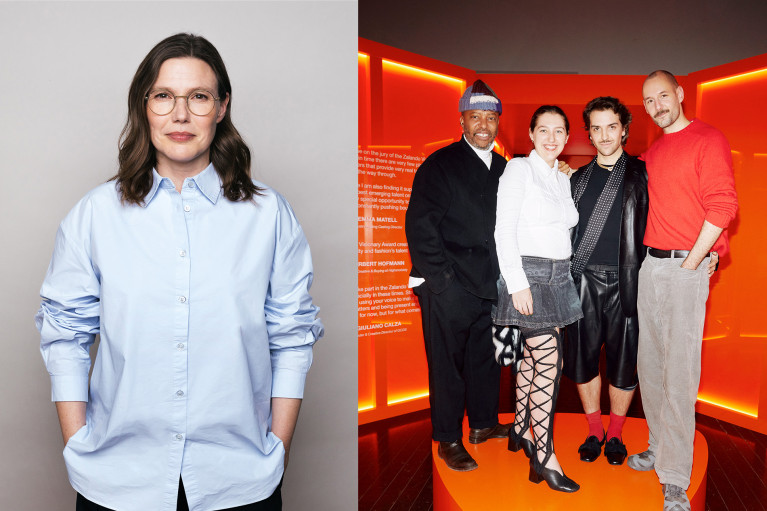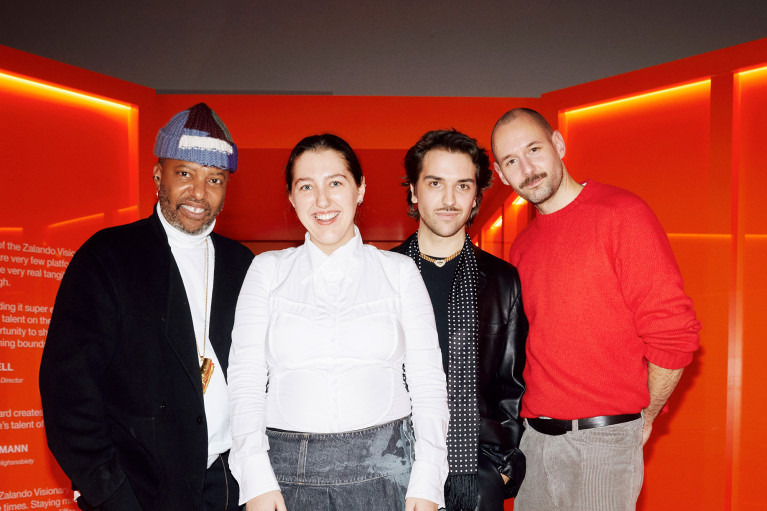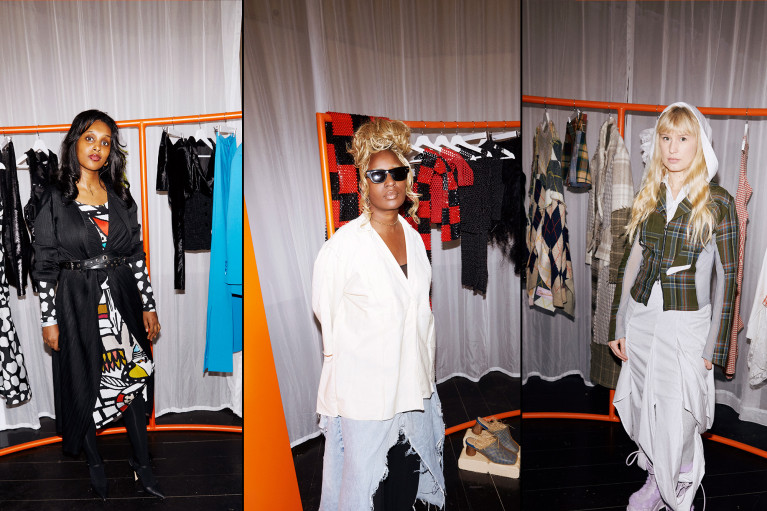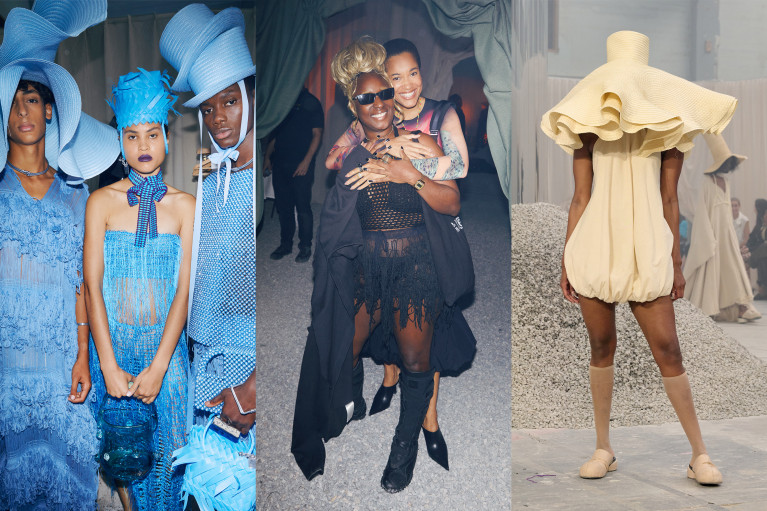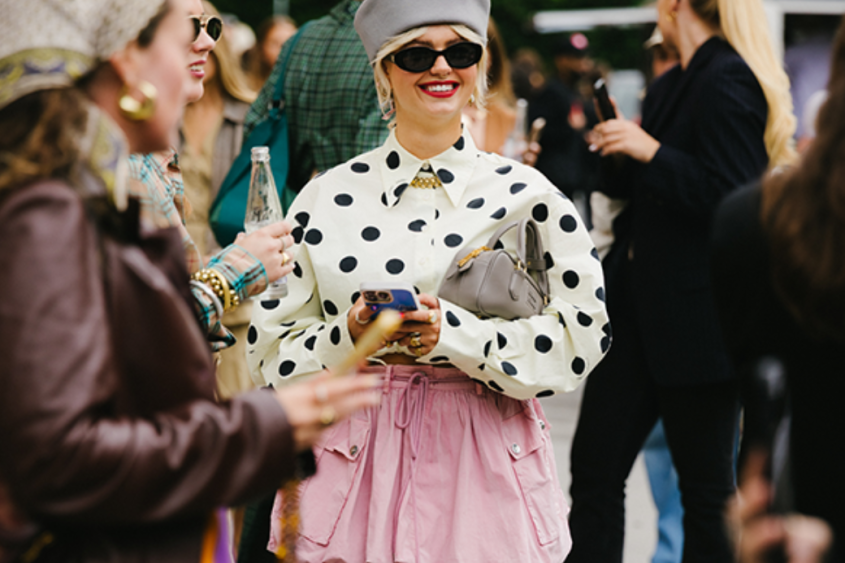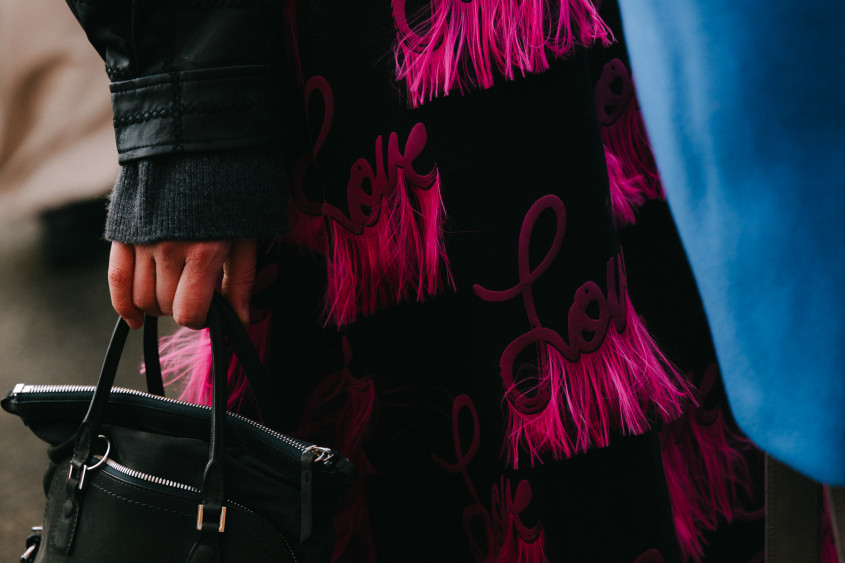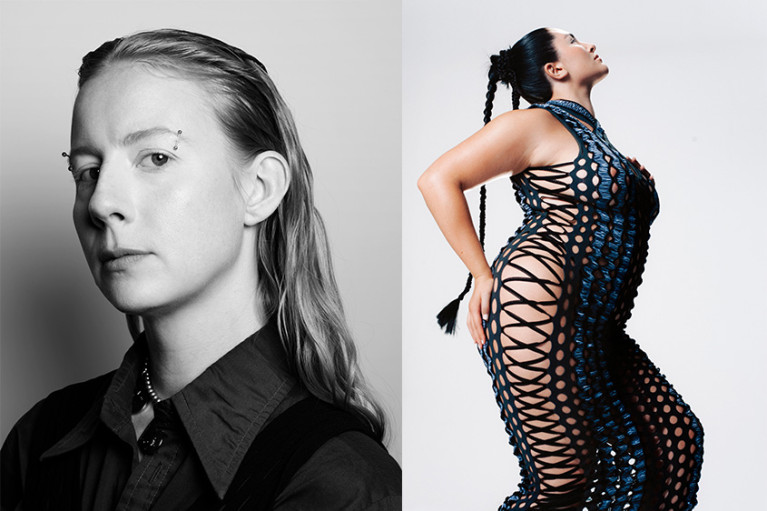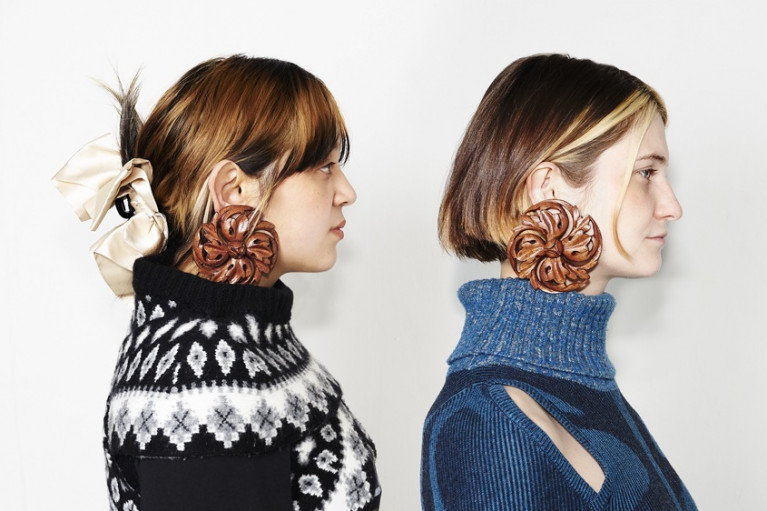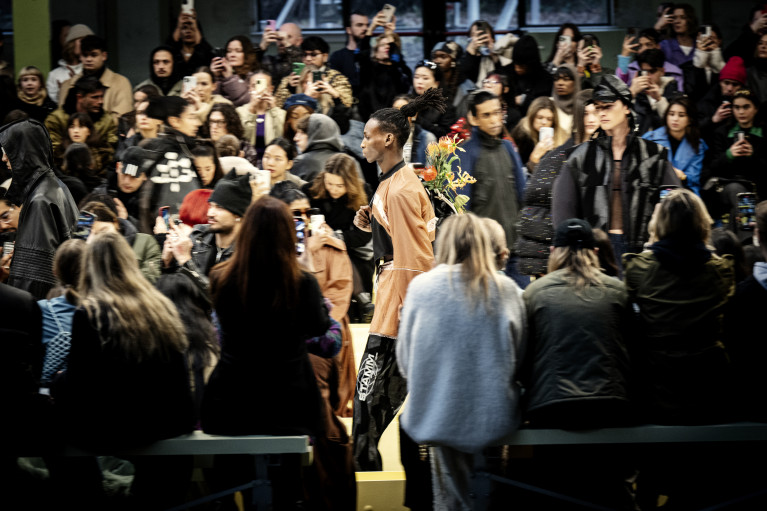Zalando Visionary Award
Zalando Visionary Award
Learn more about how the Zalando Visionary Award champions positive change in fashion by celebrating designers who blend exceptional design, innovation, and social impact.
Learn more about how the Zalando Visionary Award champions positive change in fashion by celebrating designers who blend exceptional design, innovation, and social impact.
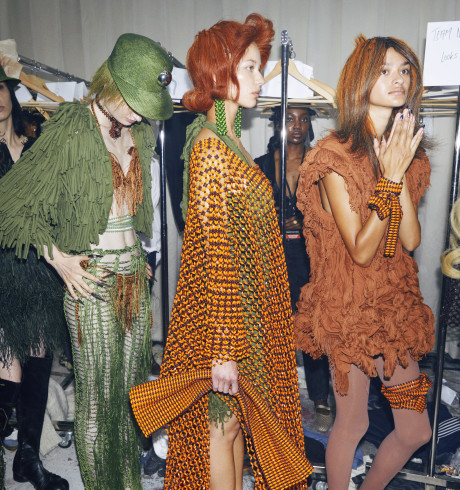
The Zalando Visionary Award, established by Zalando in 2023, recognises the makers of the future by putting the spotlight on designers and brands with a visionary approach to creating meaningful change within the fashion industry and beyond. To be considered, brands must show how they are driving meaningful change in one or more of the three pillars, whilst also meeting Copenhagen Fashion Week’s Sustainability Requirements. An international jury of industry thought leaders and Zalando representatives selects the winner.
The Zalando Visionary Award Pillars
Zalando Visionary Award 2026
Zalando names Institution, KYLE HO and Milk of Lime as finalists for its Visionary Award 2026
This year's finalist brands were carefully selected by the jury based on their visionary approach to award pillars of social impact, innovation, and design.
Zalando Visionary Award 2025
Media
Zalando Visionary Award 2025 In Videos
Zalando Visionary Award winner IAMISIGO SS26 Runway Show
Learn more about Zalando Visionary Award winner IAMISIGOs preparation for their SS26 runway show:
News
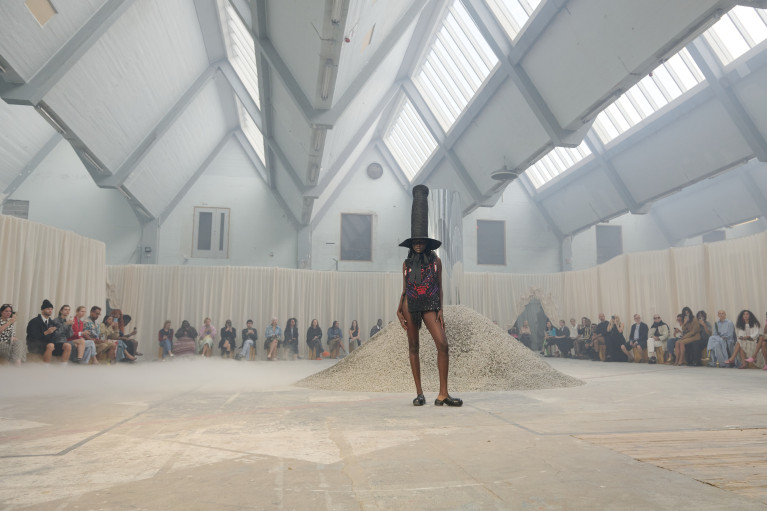
Zalando returns to CPHFW for the third Visionary Award
Zalando returned to Copenhagen Fashion Week to celebrate our 2025 winner IAMISIGO.
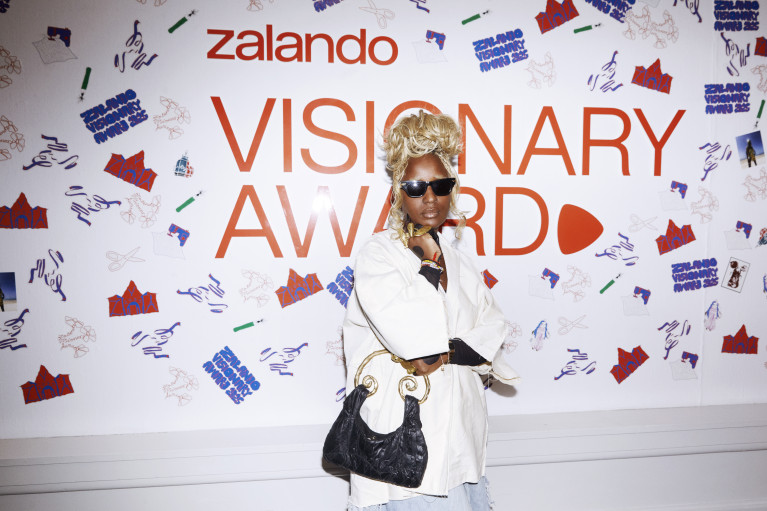
IAMISIGO Wins the Zalando Visionary Award 2025
IAMISIGO redefines modern fashion while preserving cultural legacy; the result is a compilation of contemporary designs with a bold, fresh perspective.
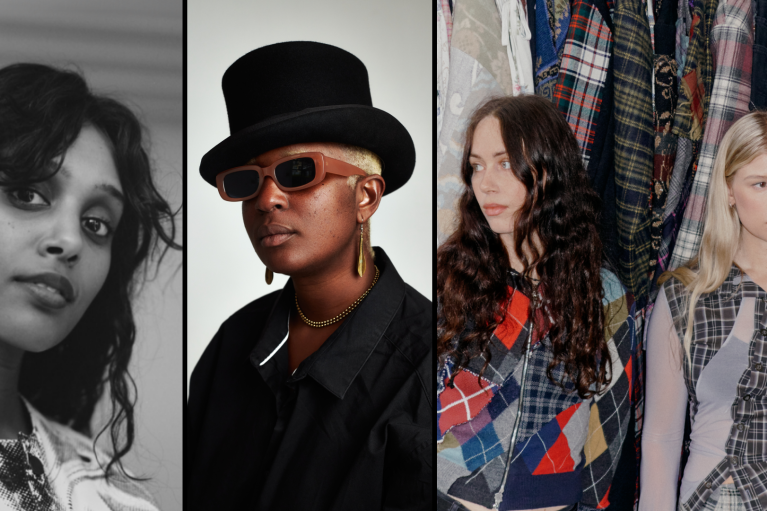
FEBEN, IAMISIGO and Rave Review named as finalists for the Zalando Visionary Award 2025
The award continues to elevate designers who are reshaping the fashion landscape with bold, visionary approaches.
